How to correctly calculate and choose a resistor for an LED
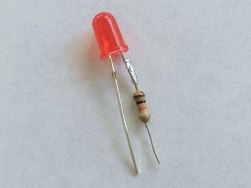 Each of us saw the LED. An ordinary small LED looks like a plastic cone-lens on conductive legs, inside of which there is a cathode and anode. In the diagram, the LED is depicted as a regular diode, from which the arrows indicate the emitted light. So the LED is used to receive light when electrons move from the cathode to the anode - visible light is emitted by the p-n junction.
Each of us saw the LED. An ordinary small LED looks like a plastic cone-lens on conductive legs, inside of which there is a cathode and anode. In the diagram, the LED is depicted as a regular diode, from which the arrows indicate the emitted light. So the LED is used to receive light when electrons move from the cathode to the anode - visible light is emitted by the p-n junction.
To properly connect the LED to the power source, you must first observe the polarity. The anode of the LED is connected to the plus “+” of the power source, and the cathode to the minus “-”. The cathode connected to the minus has a short output, the anode, respectively, is long - the long leg of the LED is on the plus “+” of the power source.Solder the LED leads carefully and quickly, because the semiconductor junction is very afraid of excess heat, so you need to touch with a brief motion of the soldering iron ...
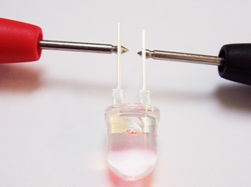 LED is a rather gentle semiconductor device. If the current through its P-N junction becomes critically larger than the nominal, then overheating will begin and thermal destruction of the crystal will not take long. Therefore, before checking the LED for serviceability, be prepared to be very careful not to accidentally spoil the workpiece.
LED is a rather gentle semiconductor device. If the current through its P-N junction becomes critically larger than the nominal, then overheating will begin and thermal destruction of the crystal will not take long. Therefore, before checking the LED for serviceability, be prepared to be very careful not to accidentally spoil the workpiece.
Small round LEDs are designed for an operating voltage in the range of 2 to 4 volts, namely: red, yellow and green - up to 2.2 volts, and white and blue - up to 3.6 volts. The operating rated current of a small round LED usually does not exceed 10 - 20 milliamps, keep this in mind. So, to check the LED, you first need to decide what you will use to check. If there is no multimeter at handthen the first thing you can take a power source with a known voltage in the range from 5 to 12 volts, but do not rush to connect ...
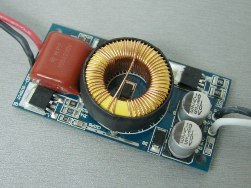 LEDs are the most efficient of all common light sources to date. Problems also lie behind efficiency, for example, the high requirement for the stability of the current that feeds them, the poor tolerance of complex thermal operating conditions (at elevated temperatures). Hence the task of solving these problems. Let's see how the concepts of power supply and driver differ. To begin with, let's delve into the theory.
LEDs are the most efficient of all common light sources to date. Problems also lie behind efficiency, for example, the high requirement for the stability of the current that feeds them, the poor tolerance of complex thermal operating conditions (at elevated temperatures). Hence the task of solving these problems. Let's see how the concepts of power supply and driver differ. To begin with, let's delve into the theory.
A power supply unit is a generic name for a part of an electronic device or other electrical equipment that supplies and regulates electricity to power this equipment. It can be located both inside the device and outside, in a separate case. A driver is a generic name for a specialized source, switch, or power regulator for specific electrical equipment. There are two main types of power sources ...
RGB LEDs: how they work, internal device, how to connect, RGB-led and Arduino
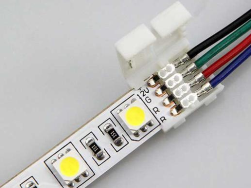 Multi-color LEDs, or as they are also called RGB, are used to indicate and create a backlight dynamically changing in color. In fact, there is nothing special about them, let's look at how they work and what RGB LEDs are.
Multi-color LEDs, or as they are also called RGB, are used to indicate and create a backlight dynamically changing in color. In fact, there is nothing special about them, let's look at how they work and what RGB LEDs are.
In fact, an RGB LED is three single-color crystals combined in one housing. The name RGB stands for Red - red, Green - green, Blue - blue according to the colors that each crystal emits. These three colors are basic, and any color is formed on their mixing; this technology has long been used in television and photography.Color adjustment is carried out by adjusting the brightness of the radiation of each of the crystals.To change the color of the RGB tape, special RGB controllers are used.Usually a remote control comes with the controller ...
Types, characteristics, marking of SMD LEDs
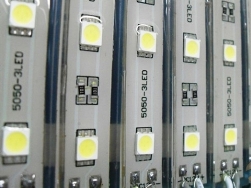 Types, characteristics, marking of SMD LEDs Lighting is an important condition for work and human comfort. For a long time, incandescent lamps were used as light sources, then fluorescent lamps; for high-power spotlights and lamps, halogen lamps, DRL and DNaT were used.
Types, characteristics, marking of SMD LEDs Lighting is an important condition for work and human comfort. For a long time, incandescent lamps were used as light sources, then fluorescent lamps; for high-power spotlights and lamps, halogen lamps, DRL and DNaT were used.
In the 21st century, the generation of lighting fixtures has changed, and LED lamps occupy more than half of the market, they are often called foreign lamps or LED lamps. Depending on the design and power, they are either LED COB-matrices, or assemblies of individual LEDs. The first LED fixtures and lamps were built on the basis of 5-mm output LEDs. They were not distinguished by high energy efficiency, price and reliability, but this was the first step in the development of a new light source. For a long time, such LEDs were used as indicators ...
Circuitry of power supplies for LED strips and not only
 LEDs replace these types of light sources, such as fluorescent lamps and incandescent lamps. Almost every house already has LED lamps, they consume much less than two of their predecessors (up to 10 times less than incandescent lamps and 2 to 5 times less than CFLs or energy-saving fluorescent lamps). In situations where you need a long light source, or you need to organize illumination of complex shape, an LED strip is used.
LEDs replace these types of light sources, such as fluorescent lamps and incandescent lamps. Almost every house already has LED lamps, they consume much less than two of their predecessors (up to 10 times less than incandescent lamps and 2 to 5 times less than CFLs or energy-saving fluorescent lamps). In situations where you need a long light source, or you need to organize illumination of complex shape, an LED strip is used.
Led tape is ideal for a number of situations, its main advantage over individual LEDs and LED arrays are power sources. They are easier to find on sale in almost any electrical goods store, unlike drivers for high-power LEDs, moreover, the selection of a power supply is carried out only by power consumption, because the vast majority of LED strips ...
How to choose the right driver for LEDs
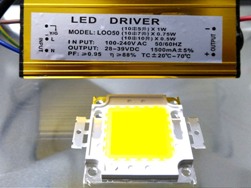 The leading position among the most effective sources of artificial light is occupied today by LEDs. This is largely due to the quality of power sources for them. When working in conjunction with a correctly selected driver, the LED will maintain a steady brightness of light for a long time, and the life of the LED will be very, very long, measured in tens of thousands of hours.
The leading position among the most effective sources of artificial light is occupied today by LEDs. This is largely due to the quality of power sources for them. When working in conjunction with a correctly selected driver, the LED will maintain a steady brightness of light for a long time, and the life of the LED will be very, very long, measured in tens of thousands of hours.
Thus, a correctly selected driver for LEDs is the key to a long and reliable operation of the light source. And in this article we will try to reveal the topic of how to choose the right driver for the LED, what to look for, and what are the drivers for LEDs in general. A driver for LEDs is called a stabilized power supply of constant voltage or direct current. In general, initially, an LED driver is a source of stable current, but today even sources ...
Types of LEDs and their characteristics
 LED lighting is by far the most efficient, and in this context it is not at all surprising that LEDs undergo a certain evolution year after year. Their power is becoming more and more, buildings are being optimized for various purposes, not to mention the color of the emitted light. The color can be almost any, it is enough for the manufacturer to choose the appropriate composition of the semiconductor and dopants, so that the band gap for the recombination of electrons and holes gives the desired color.
LED lighting is by far the most efficient, and in this context it is not at all surprising that LEDs undergo a certain evolution year after year. Their power is becoming more and more, buildings are being optimized for various purposes, not to mention the color of the emitted light. The color can be almost any, it is enough for the manufacturer to choose the appropriate composition of the semiconductor and dopants, so that the band gap for the recombination of electrons and holes gives the desired color.
Meanwhile, all modern LEDs can be classified to some extent by type, that is, by the most distinctive distinguishing features, which we will do - we will consider several types of the most common LEDs, from indicator ones to lighting ones. The LED started its evolution ...
